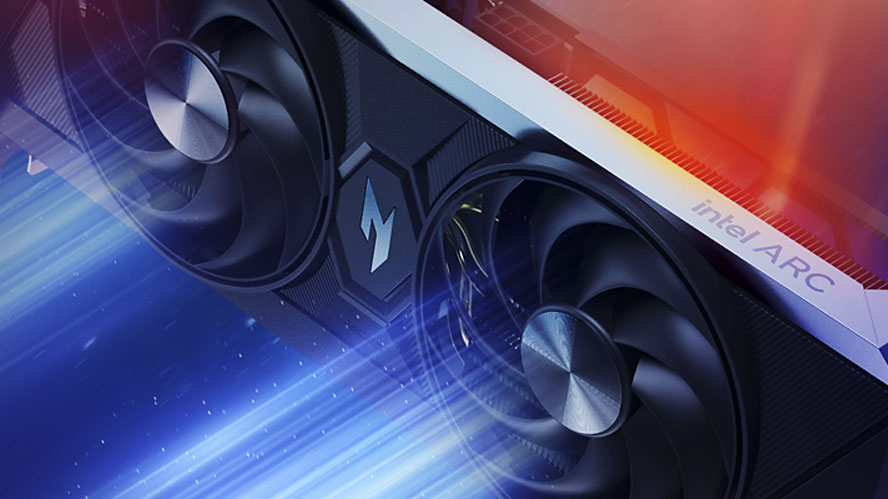Arc B770 spotted? Four new Intel Battlemage GPU IDs appear in Linux Mesa graphics driver
Intel might have an RTX 5060 series/RX 9060 series competitor in the works.

Intel has added four new device IDs with the Battlemage codename in a new Linux Mesa graphics driver update. Lasse Kärkkäinen on X shared the discovery, highlighting four new Battlemage PCI IDs that are conveniently missing any GPU die model nomenclature, suggesting one of the IDs could be the Battlemage B770 GPU.
The four IDs that were added are 0xe220, 0xe221, 0xe222, and 0x223, with all four sporting a vague "BMG" nomenclature, merely pointing out that these GPUs run off of Intel's Battlemage architecture. This is different from some previous Mesa PCI IDs where Intel put the actual GPU die name in the nomenclature, such as "BMG G21". At least two of these IDs likely represent Intel's new Arc Pro B50 and B60 aimed at workstations. However, that still leaves two of the IDs open for interpretation.
Linux Mesa PCI IDs represent graphics hardware that the Mesa graphics library supports. Mesa is responsible for providing 3D-acceleration capabilities to Linux operating systems. Typically (but not always), GPU manufacturers publish new PCI IDs to the Mesa library before those PCI devices launch.
@GawroskiT @Haze2K1 @x86deadandback Three more Battlemage SKUs is being added to Mesa. Very interesting. These three are all "BMG" instead of "BMG-G21". https://t.co/3x87CWJqFx pic.twitter.com/90U2TKnqwlMay 27, 2025
At least one of the IDs likely represents the highly rumored Battlemage B770. So far, Intel has only launched the B570 and B580, which are entry-level-focused gaming graphics cards priced, initially, in the sub-$250 range. Intel's previous-generation Arc Alchemist lineup consisted of an A300 series, A500 series, and A700 series, with the A770 being Intel's flagship GPU at the time.
Before the B-series debuted, we discovered that Intel was producing at least three Battlemage GPUs, including G10 and G31. G21 is responsible for powering the B580 and B570, leaving Intel with two other Battlemage dies to be used in other products. Since Battlemage's release, there have been a plethora of leaks and rumors suggesting Intel is still on track to launch the B770 sometime soon, possibly as early as Q4.
The B770's specs are likely to be similar to those of the A770 but based on a newer architecture consisting of 32 Xe cores and a 256-bit interface. Both of these specs would represent massive upgrades over the B580's 20 Xe cores and 160-bit memory interface. The higher bus width will likely translate into higher memory capacities, too, with at least 16GB or more of GDDR6/GDDR6X memory.
This theoretical B770 would likely give Intel a proper mid-range competitor against the RX 9060 series and RTX 5060 series. In a best-case scenario, it might approach RX 9070 and RTX 5070-level performance, but that is doubtful. If Intel does launch a B770, we can expect a trimmed-down B750 as well, if history repeats itself.
Get Tom's Hardware's best news and in-depth reviews, straight to your inbox.

Aaron Klotz is a contributing writer for Tom’s Hardware, covering news related to computer hardware such as CPUs, and graphics cards.
-
beyondlogic ReplyAdmin said:Intel has added four new PCI IDs to the Linux Mesa graphics library, potentially signaling the upcoming release of a B770 graphics card.
Arc B770 spotted? Four new Intel Battlemage GPU IDs appear in Linux Mesa graphics driver : Read more
really hope that a b770 does come out am really impressed with the a750 card that i got for 241.63 Usd or 179.99. does extremely well on my older system at 1080p had zero issues with drivers it just worked.